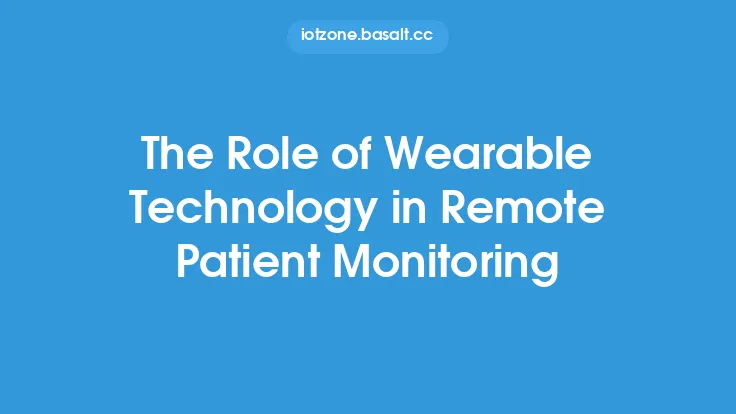The increasing popularity of smartwatches has led to a significant expansion of the Internet of Things (IoT) ecosystem. Smartwatches are no longer just simple time-telling devices but have evolved into sophisticated wearable devices that can interact with various other devices and systems. In this article, we will delve into the role of smartwatches in IoT ecosystems, exploring their capabilities, applications, and the impact they have on the way we live and work.
Introduction to IoT Ecosystems
IoT ecosystems refer to the network of physical devices, vehicles, home appliances, and other items that are embedded with sensors, software, and connectivity, allowing them to collect and exchange data. These ecosystems enable devices to interact with each other and their environment, creating a more connected and automated world. Smartwatches, as wearable devices, play a crucial role in IoT ecosystems, serving as a hub for collecting and transmitting data from various sources.
Smartwatch Capabilities in IoT Ecosystems
Smartwatches possess a range of capabilities that make them an essential component of IoT ecosystems. Some of these capabilities include:
- Sensor data collection: Smartwatches are equipped with various sensors, such as accelerometers, gyroscopes, and heart rate monitors, which collect data on the user's physical activity, health, and environment.
- Wireless connectivity: Smartwatches can connect to other devices and systems via Bluetooth, Wi-Fi, or cellular networks, enabling data transmission and reception.
- Processing and analysis: Smartwatches can process and analyze data locally or in the cloud, providing insights into user behavior, health, and other factors.
- Notification and alert systems: Smartwatches can receive notifications and alerts from other devices and systems, keeping users informed and up-to-date.
Applications of Smartwatches in IoT Ecosystems
Smartwatches have a wide range of applications in IoT ecosystems, including:
- Health and fitness monitoring: Smartwatches can track user physical activity, sleep patterns, and other health metrics, providing valuable insights into overall well-being.
- Smart home automation: Smartwatches can interact with smart home devices, such as thermostats, lights, and security systems, allowing users to control their environment remotely.
- Wearable payments: Smartwatches can enable contactless payments, allowing users to make transactions without the need for cash or cards.
- Navigation and tracking: Smartwatches can provide turn-by-turn directions, track user location, and offer other navigation-related features.
Technical Aspects of Smartwatch Integration
The integration of smartwatches into IoT ecosystems requires a range of technical considerations, including:
- Device compatibility: Smartwatches must be compatible with other devices and systems, ensuring seamless communication and data exchange.
- Data protocols and standards: Smartwatches must adhere to standardized data protocols, such as Bluetooth Low Energy (BLE) or Message Queue Telemetry Transport (MQTT), to facilitate communication with other devices.
- Security and authentication: Smartwatches must implement robust security measures, such as encryption and authentication, to protect user data and prevent unauthorized access.
- Power management: Smartwatches must be designed to optimize power consumption, ensuring extended battery life and minimizing the need for frequent recharging.
Impact of Smartwatches on IoT Ecosystems
The integration of smartwatches into IoT ecosystems has a significant impact on the way we live and work. Some of the benefits include:
- Increased convenience: Smartwatches provide users with a convenient and accessible way to interact with other devices and systems.
- Improved health and wellness: Smartwatches can track user health and fitness metrics, providing valuable insights into overall well-being.
- Enhanced productivity: Smartwatches can enable users to receive notifications and alerts, keeping them informed and up-to-date on important events and tasks.
- New business opportunities: The integration of smartwatches into IoT ecosystems creates new business opportunities, such as wearable payments and smart home automation.
Challenges and Limitations
While smartwatches have the potential to revolutionize IoT ecosystems, there are several challenges and limitations that must be addressed, including:
- Interoperability: Smartwatches must be able to communicate with other devices and systems, which can be a challenge due to differences in protocols and standards.
- Security: Smartwatches must implement robust security measures to protect user data and prevent unauthorized access.
- Battery life: Smartwatches must be designed to optimize power consumption, ensuring extended battery life and minimizing the need for frequent recharging.
- User adoption: Smartwatches must be user-friendly and provide a seamless user experience to encourage widespread adoption.
Conclusion
In conclusion, smartwatches play a vital role in IoT ecosystems, enabling users to interact with other devices and systems in a convenient and accessible way. With their range of capabilities, including sensor data collection, wireless connectivity, and processing and analysis, smartwatches have a wide range of applications, from health and fitness monitoring to smart home automation. While there are challenges and limitations to be addressed, the integration of smartwatches into IoT ecosystems has the potential to revolutionize the way we live and work, providing new opportunities for convenience, productivity, and innovation.





